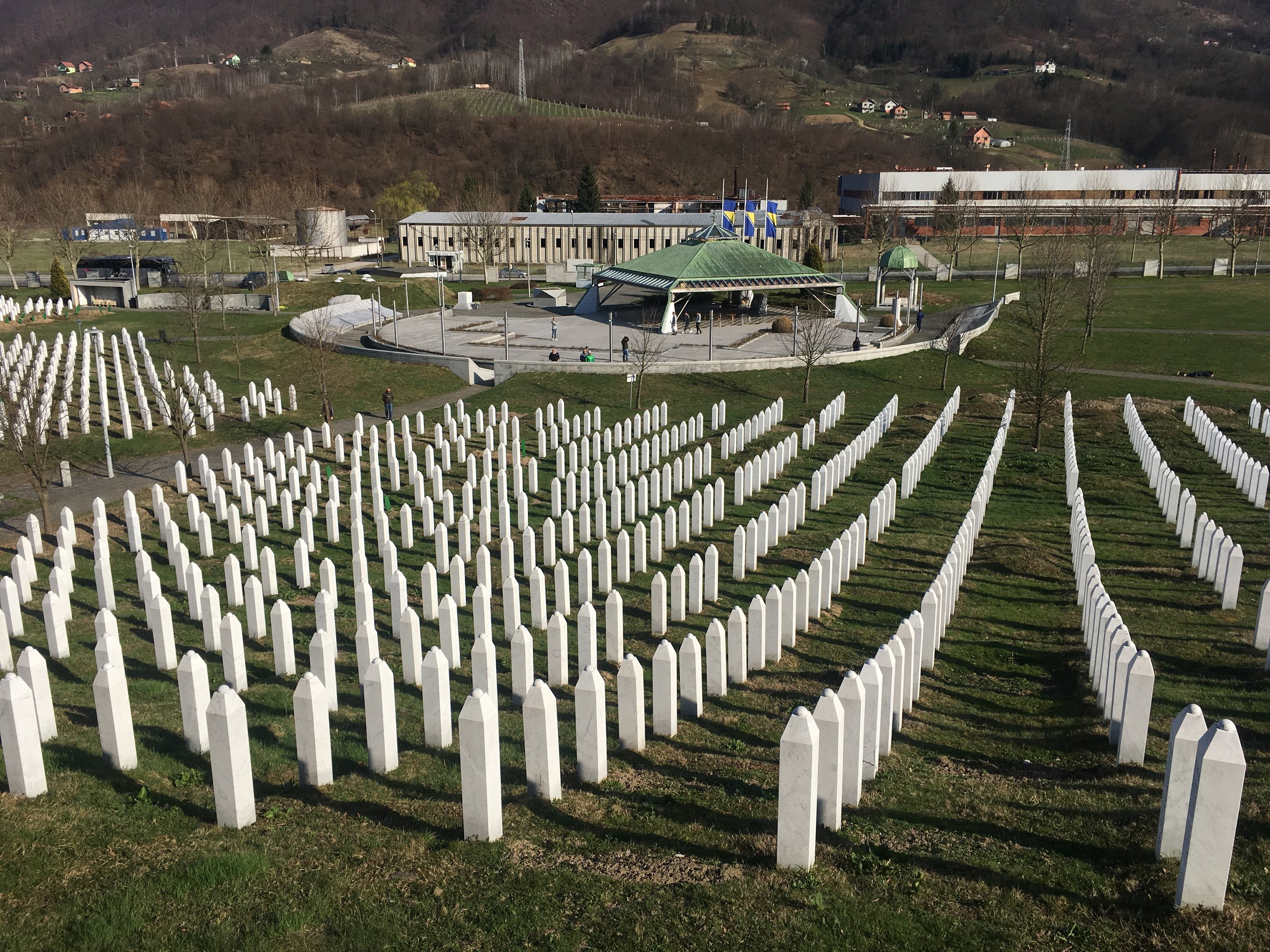
GENOCIDE IN SREBRENICA IN JULY 1995
Author: Hikmet Karčić, PhD, Institute for Islamic Tradition of Bosniaks • Photo: Skrewt25 - Own work, CC BY-SA 4.0, https://commons.wikimedia.org/w/index.php?curid=110685017 • Source: Wikipedia

In April 1992, Srebrenica was occupied by Novi Sad Corps of the Yugoslav People's Army. Small groups of Bosniaks who offered resistance regrouped on surrounding mountains and by the end of May managed to drive members of the army out of the town. Srebrenica, Žepa and Goražde soon became the only towns in the Eastern Bosnia safe for Bosniak refugees and people banished from other places.
The small town of Srebrenica soon became overcrowded because it hosted 40,000 refugees. Somewhat later, Srebrenica, Žepa and Goražde fell victims to the brutal siege by the army of Bosnian Serbs. As a response to continuous attacks and repeated massacres, in April 1993 the United Nations proclaimed Srebrenica a “protected zone”, pursuant to the Resolution 819 of the UN. Nevertheless, the enclave remained under the siege and authorities of Bosnian Serbs often hindered humanitarian aid.
Pursuant to Resolution 819, the UN Commission of the Security Council was formed, which was sent to Srebrenica in April 1993. The conditions and the atmosphere within the besieged zone were so ominous that the Commission described them as a “slow-motion” genocide.
In April 1993, the first UNPROFOR forces, consisting of the Canadian contingent, arrived in Srebrenica. In early 1994, they were replaced by a Dutch battalion, which remained in the enclave until July 1995.
Leaders of Republika Srpska additionally elaborated and “improved” intentions set in the Six Strategic Goals, which were adopted by the Assembly of Bosnian Serbs in May 1992, by issuing directives 4 and 7, which gave instructions to the army.
In July 1994, Slavko Ognjenović, commander of the Bratunac brigade, said: “There must be no withdrawal around the Srebrenica enclave; instead, we must go forward. We must make the enemy's life miserable and make temporary survival in the enclave impossible, to make them leave the enclave in an organized way as soon as possible, understanding that they cannot survive there.”
Directive number 7 of 8 March 1995 included the following orders to the Drina Corps of the army of Bosnian Serbs: “... Srebrenica has to be separated from Žepa as soon as possible, which will also prevent mutual communication between the two enclaves. Well-planned and well-conceived daily combat activities should create unbearable conditions of total insecurity with no hope of further survival or life for the inhabitants of Srebrenica.”
On St. Vitus Day, 28 June 1995, president of the Republika of Bosnian Serbs Radovan Karadžić and chairman of the Assembly of Bosnian Serbs Momčilo Krajišnik visited the Drina Corps in Vlasenica. Karadžić discussed an attack on Srebrenica with the commander, general Krstić. In July 1995, the army and the police of Republika Srpska began operation Kirvaja ’95 aimed at conquering Srebrenica.
After several days of random bombing and violent military attacks, the enclave was conquered on 11 July. UN troops began to abandon their positions and withdraw to the nearby UN base in Potočari. Thousands of Bosniak women, children and old people also headed to the base of the United Nations, searching for shelter and protection. Inhabitants of Srebrenica knew that 1992 can easily be repeated. Men were separated from women and then executed. Women and children were deported in the direction of Tuzla by buses, and some were sexually abused.
Across Eastern Bosnia, Bosniaks from the UN enclave Srebrenica were hunted. Serbian military and police forces captured Bosniaks in forests and took them to several execution sites: Kravice, Orahovac, Petkovci, Brana, Kozluk, Branjevo and Pilica.
In the school “Grbavciˮ near Orahovac, a Serbian soldier watched detainees being lined up and killed. He testified as follows: “Out of the pile, a pile of dead bodies that no longer resembled people but rather a pile of meat in pieces, a man crawled out. I say 'a man' though it was actually a five or six-old boy. It is incredible. Incredible.
The boy crawled out and went toward a path, a path where people with submachine guns were standing doing their job. And the child was going toward them. All the soldiers and policemen there, people who had no problem with killing, suddenly dropped their guns and all of them to the last one, simply. They saw only an innocent child, a cute child covered with pieces of other people's entrails. [...] And while he was emerging from the heap of killed people, he was saying: “’Papa' ... papa, where are you?’”
Photo: Skrewt25 - Own work, CC BY-SA 4.0, https://commons.wikimedia.org/w/index.php?curid=110685017
Photo: Michael Büker - Own work, CC BY-SA 3.0, https://commons.wikimedia.org/w/index.php?curid=6405662

